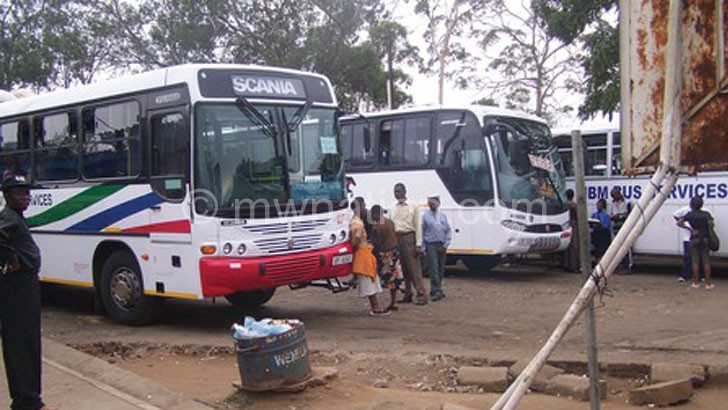Big buses business shrinking, says Bboam
Big Buses Association of Malawi (Bboam) has decried the shrinkage of big buses business, with figures showing a drop of about 17 percent between 1992 and this year.
Figures collected by Bboam show that in 1992, there were about 300 buses operating in the country, but 24 years down the line, only 250 buses are operational.

The association’s acting vice chairperson, Cuthbert Chinguwo, said apart from internal environmental factors which have affected the sector’s growth, prospects have also been hampered by external factors, particularly the economy.
He said even if other factors such as proliferation of minibuses and an increase in car ownership over the years were to be considered, figures point at a decline and not a growth of the big buses sector in the country.
Chinguwo, who is also Axa Coach Services general manager, said taking into account performance indicators of 1992, the country should have had 548 buses by now to sustain the big bus to population ratio.
“A quick comparison of interest rates, inflation and exchange rates [kwacha to the dollar) shows how economic conditions have worsened over the years, making it increasingly difficult to invest in an industry that is capital intensive,” said Chinguwo, at a meeting of a newly established Bboam in Blantyre last week.
Bboam interim chairperson Yusuf Matumula, in an interview, said they have already met with officials from different ministries to discuss a number of issues relating to policies and regulations.
At the meeting, officials from Blantyre City Council, Malawi Police Service and Directorate of Road Traffic and Safety Services represented their institutions and made presentations.
Bboam has also bemoaned rising costs on insurance, fuel and lubricants, tyres and spare parts, among others. n





